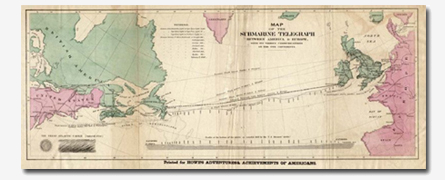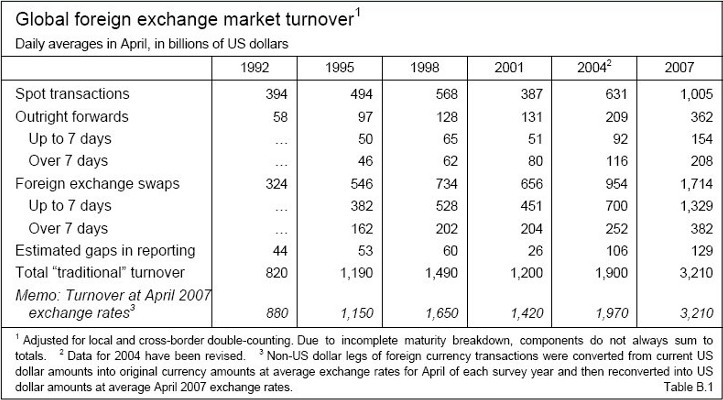2. Good Buy Bye Gold?
The most fundamental answer why gold was needed to establish an international monetary system is perhaps that even fluctuations in the value of money caused by the supply and demand of gold are better than experimenting hyperinflation or deep devaluation because of irresponsible monetary policy.
But history shows that there were serious problems associated with the gold-money peg and that it was impossible to keep the linkage. Difficulties arrived when the supply of gold oscillated, causing short term price fluctuations. Moreover, the rapid growth of the world economy was faster than the supply of new gold, and a long term shortage of gold became a constraint to maintain the peg.
The abandonment of the convertibility to gold was the start of the Forex market as we know it today. The US Dollar, already under serious pressure due to the US trade deficit, was allowed to float and all currencies were set adrift to find their place in the global economy. From there on many speculative opportunities started to afloat.
Since the early 70's the major world currencies started to float freely, mainly controlled by offer and demand on the exchange market, and has kept floating for almost 4 decades now. Among these currencies, there were the Deutsche Mark, the British Pound and the Japanese Yen, and their prices were calculated on a daily basis. The volumes, velocity and volatility started to increase and new financial instruments were created. Since then, exchange rate instability among major currencies has been the norm.
The Transformation Of Currency Exchange In The '70s
The following decades saw the Forex being transformed by far in the largest and less regulated financial market in the world thus abolishing restrictions on capital flows in almost all countries, and allowing market forces to move exchange rates.
But the idea to fix exchange rates did not disappear. Some major economies attempted to move back to a peg or valuate currencies relatively to something: it happened during the 70's and 80's when Asian communities tried to group together as the west Europeans did. During these years currencies exhibited short-term volatility, medium-term misalignment and long-term drift. While after the breakdown of Bretton Woods the majority of policy makers thought the free floating system had an automatic adjusting mechanism, the fact was that exchange rate instability itself became a serious threat to the world economy.
In December 1971, there was an international effort to re-establish the fixed exchange rate system at adjusted levels: the monetary authorities of major countries gathered in Washington, DC to set their mutual exchange rates at new levels and the Smithsonian Agreement is signed, similar to the previous Bretton Woods, but allowing higher foreign exchange fluctuations.
In 1972, the European Community, in an attempt to gain independence from the influence of the Dollar, created the European Joint Float formed by the German Federal Republic, France, Italy, Holland, Belgium and Luxembourg. This was another initiative to revise and redesign the international monetary system. However the agreement is abolished a year later and a shift to a floating rate system occurred by default, since there was no alternative agreement at the time. As a result, new markets emerged along with new financial instruments, market deregulation, market systems and trade liberalization.
Governments could thereafter set semi-pegged or leave their currencies fluctuate freely. In fact, in 1978, the free floating system is installed between the main industrialized countries, which meant, once again, that the relative value of currencies would be determined by the forces of supply and demand.
The Eurodollar
One of the major catalysts for the acceleration of currency exchange was the rapid increase in US Dollar deposits in banks outside the control of US authorities. Revenues from Russian oil sales, for example, were deposited in Dollars, but out off of the United States, due to the fear of being frozen by the regulatory authorities of the United States.
The US government imposed laws to restrict Dollar lending to foreigners. Euromarkets were particularly attractive because they had far fewer regulations and offered higher yields. The US government restricted lending Dollars to foreigners in response to the explosive growth in the number and size of deposits abroad.
This was a precursor of the Eurodollar market (a market where assets are deposited in a currency different from the currency of origin). Later in 1978 Europe created the European Monetary System, based on the Eurodollar market which first emerged in the 50's.
Within this context, and because of its convenient location - which permits to operate simultaneously with the Asian and American markets - and its ability to connect these two markets, London became, and still remains, the world capital of the foreign exchange market.
In the 80's it became the key center of the Eurodollar market when British banks began lending Dollars as an alternative to Pounds in order to maintain its leadership position in global finance.
Until 1985, the Dollar gradually appreciated damaging the international competitiveness of US firms. In September 1985, the Plaza Agreement was signed between the G5 countries (US, Japan, Germany, France, UK) to lower the US Dollar which was clearly overvalued.
The joint intervention of the G5 was very effective, however, the US Dollar continued to lose ground beyond acceptable levels for Japan and Germany. In February 1987, the economic leaders of the G7 countries (G5 plus Italy and Canada) met in Paris to stop the further fall of the Dollar, known as the "Louvre Accord". This cooperation era was about managing free floating exchange rates through coordinated interventions.
Latest Turnovers
From the late 80's onwards US companies began to borrow foreign currencies, finding in the Euromarkets an attractive investment opportunity where to channel their excess of liquidity, and a source of short-term financing for foreign trade. This movement of capital across borders skyrocketed foreign exchange transactions to about US$ 70 million a day in the early 80's with the development of computational tools. These tools accelerated the international flow of capital, bringing the market spread throughout Asia, Europe and America. These same tools allowed the participation of private investors in a market that was traditionally the exclusive domain of banks and large institutions.
In 1991 the Maastricht treaty was signed. It was meant to converge the exchange rates, inflation and fiscal balance between several European currencies. However, the unification of West and East Germany conducted at a 1 to 1 exchange rate, put an upward pressure on the Deutsche Mark which was the anchor currency for the future Euro. This put a downward pressure on other currencies, the British Pound started to fall and England abandoned the group, unwilling to import high interest rates from Germany. In 1992-93 the European monetary system almost collapsed when economic pressures were threatening with a weaker currency devaluation. But the pursuit of monetary stability in Europe, which started in Europe in the 1970s, continued with a renewed attempt not only to fix the European currencies, but also to replace them with a single currency. Finally, in 2001, the project to establish a regionally common currency completed and the Euro surged stronger against the US Dollar.
Speculative Turnovers
The volume traded in Forex today is so high that no data is available, but every three years, the BIS (Bank of International Settlements) publishes the results of a survey made among major market participants and creates an estimate based on the responses obtained.
The above graphic, excerpted from The Triennial Central Bank Survey of Foreign Exchange and Derivatives Market Activity, shows volume growth in the last years.
View complete statistics by clicking the links below:
Triennial Central Bank Survey 2007Triennial Central Bank Survey 2007- Statistical Annex
The report completed in 2007, for instance, estimated the average global daily volume at about 3.2 trillion traded in the world's main financial markets, of which an estimated 95% is speculative. Its daily transaction volume is about 100 times that of all the stock-exchanges together. The fact that 95% of the market is speculative means that most of the participants buying a currency really have no intention of receiving that particular currency. They're watching their price movement to sell it back for a profit when it has increased in value.
The other 5% of the daily turnover come from companies hedging their exposures and governments exchanging foreign currencies and reserves.
85% of the turnover is done in the major currencies against the Dollar where there is the most important liquidity, allowing fast fills in and out of the market. You can find just above a link to a table excerpted from the last Triennial Central Bank Survey of Foreign Exchange and Derivatives Market Activity of 2007.
In the most recent results in which the BIS classifies exchange volume by country, London remains the capital of the FOREX market. The EUR/USD pair is the most traded, and it is not a coincidence that the pair has the lowest spreads - the width between bid and offer price. Generally, in the interbank market, the higher the volume, the lower the spreads are.
In the next chapters you will learn what spreads are and all about the market mechanics, but for now we will show you how this market is composed and who moves and shakes it!
Scott Owens introduces the Forex by explaining:
Since currencies are valued differently, there is a market in place to set those values. Where a market exists speculation inevitably follows. In this case, the market is hyper-active. Banks sending deposits around the world, corporations hedging their exposure to currency risk in different countries, government banks forwarding national economic goals through monetary policy, and massive investment funds playing the role of speculator. Not long ago, that was the extent of the market. It was the domain of the professional trader or banker.
The word "market" usually invokes the idea of a central market place like the New York or London exchanges. This is not the case in forex. Instead, forex functions through what is known as the "interbank" market. Interbank is a fancy way of saying that banks trade with each other, absent a central market place. This is one major reason why volume data is not available for forex. It's also the reason why retail investors and smaller traders were left on the sideline for so long.
In the 90's, a series of events unfolded that made forex available to retail investors. Deregulation led many companies to form pools of liquidity where retail investors could take advantage of the huge speculative opportunity in forex. These dealers offered high leverage, low minimums, and a new way to trade - 24/7.
Before going on, let's recap what remains interesting for you as an aspiring trader from all the above information. The following aspects can be considered elementary edges in the business of a trader:
- Exchange rates are needed as a value of reference allowing an immediate exchange of currencies and facilitating international trade
- The floating rate system seems to have been adopted by default since there was no alternative agreement at that time but, on the other hand, it is the ideal condition for this market
- In a floating system the law that governs the exchange rates is the offer and demand
- London aggregates the most liquidity and activity in the foreign exchange and therefore its banking hours are also the most active in the Forex







